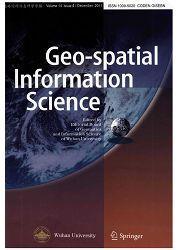控制COVID-19传播的人口流动变化:中国9个城市的手机数据分析
IF 5.5
1区 地球科学
Q1 REMOTE SENSING
引用次数: 0
摘要
限制流动措施是控制新冠肺炎传播的主要手段,但流动性下降的程度仍不确定。我们利用2020年1月10日至2月24日期间中国9个主要城市的11850亿条手机数据记录,调查了当地人口流动的变化及其与COVID-19感染的相关性。与2020年的正常天数相比,流动性下降了79.57%,与2019年同期相比下降了58.13%。日新冠肺炎发病率与当地日活动能力显著相关(R2 = 0.77, P < 0.001)。GLM分析结果显示,当迁移率降低10%时,瞬时繁殖数R(t)下降3% (P < 0.05)。我们的研究表明,在假期和公共卫生干预措施的混合作用下,流动性水平的降低可以将COVID-19的传播大大降低到较低水平。我们的研究可以为其他面临COVID-19疫情或潜在下一波疫情的地方提供限制人员流动的证据,以控制当地传播。本文章由计算机程序翻译,如有差异,请以英文原文为准。
Population mobility change for controlling the transmission of COVID-19: mobile phone data analysis in nine cities of China
Mobility restriction measures were the main tools to control the spread of COVID-19, but the extent to which the mobility has decreased remained unsure. We investigated the change in local population mobility and its correlation with COVID-19 infections, using 1185 billion aggregated mobile phone data records in nine main cities in China from 10 January to 24 February 2020. The mobility fell by as much as 79.57% compared to the normal days in 2020 and by 58.13% compared to the same lunar period in 2019. The daily incidence of COVID-19 was significantly correlated with local daily mobility (R2 = 0.77, P < 0.001). The instantaneous reproduction number R(t) declined by 3% when mobility was reduced by 10% in the GLM analysis (P < 0.05). Our study indicated that the decreased mobility level, driven by a mixture effect of holiday and public health interventions, could substantially reduce the transmission of COVID-19 to a low level. Our study could provide evidence of mobility restriction to control local transmission for other places facing COVID-19 outbreaks or potential next waves.
求助全文
通过发布文献求助,成功后即可免费获取论文全文。
去求助
来源期刊

Geo-spatial Information Science
REMOTE SENSING-
CiteScore
10.10
自引率
28.30%
发文量
710
审稿时长
31 weeks
期刊介绍:
Geo-spatial Information Science was founded in 1998 by Wuhan University, and is now published in partnership with Taylor & Francis. The journal publishes high quality research on the application and development of surveying and mapping technology, including photogrammetry, remote sensing, geographical information systems, cartography, engineering surveying, GPS, geodesy, geomatics, geophysics, and other related fields. The journal particularly encourages papers on innovative applications and theories in the fields above, or of an interdisciplinary nature. In addition to serving as a source reference and archive of advancements in these disciplines, Geo-spatial Information Science aims to provide a platform for communication between researchers and professionals concerned with the topics above. The editorial committee of the journal consists of 21 professors and research scientists from different regions and countries, such as America, Germany, Switzerland, Austria, Hong Kong and China.
 求助内容:
求助内容: 应助结果提醒方式:
应助结果提醒方式:


